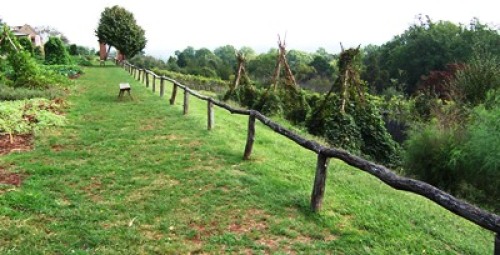
When America was young and struggling for independence, nearly everyone was a gardener. People grew crops to feed their families, and with luck, there would be enough to sell to keep the farm going.
Those who were well off had land and time to experiment with new crops and new methods of cultivation. Gentlemen farmers, like George Washington and Benjamin Franklin, formed societies for promoting agriculture as a way to help grow the young nation’s economy.
One of the fascinating facts about George Washington is that he was obsessed with manure. He experimented with many different combinations, searching for the perfect formula to grow the most productive crops on his estate at Mount Vernon.
Thomas Jefferson was especially interested in planting and growing at Monticello, his plantation estate. There he had terraced gardens where he experimented with different varieties of grapes, as well as beans and corn. He also spent time exchanging seeds with other gardeners here and in Europe.
He kept detailed notes in his journal, and that’s how we know he also liked to grow giant vegetables. He grew 24-inch cucumbers with seeds sent to him from the former governor of Ohio.
Jefferson also enjoyed an annual, informal competition with his neighbors to see who could grow and harvest the first crop of English peas each season.
“By staggering his planting and growing at least fifteen different varieties of English peas, Jefferson could enjoy fresh peas from mid-May to mid-July,” writes Bill Laws in his book, Spade, Skirret and Parsnip: The Curious History of Vegetables (Sutton Publishing, 2004).
There’s much more to learn about Jefferson and his work in the fields and gardens of early America because he was passionate about his garden until he died in 1826.
If you’re interested in reading more about our country’s founding farmers, Andrea Wulf’s book, Founding Gardeners: The Revolutionary Generation, Nature, and the Shaping of the American Nation (Vintage Books, 2012) is a great place to start.
Fine Gardening Recommended Products

A.M. Leonard Deluxe Soil Knife & Leather Sheath Combo
Fine Gardening receives a commission for items purchased through links on this site, including Amazon Associates and other affiliate advertising programs.



















Comments
Log in or create an account to post a comment.
Sign up Log in